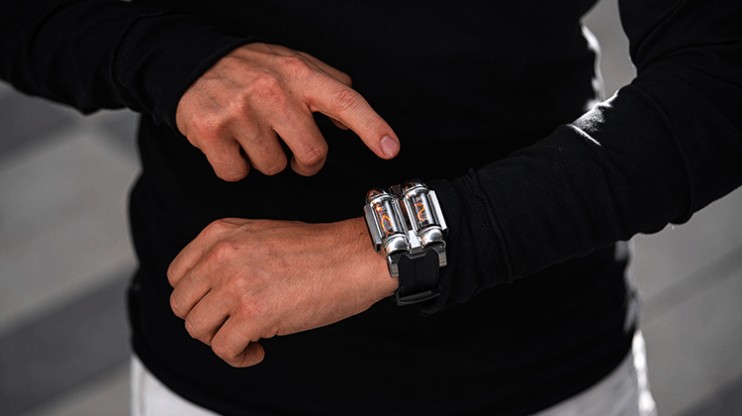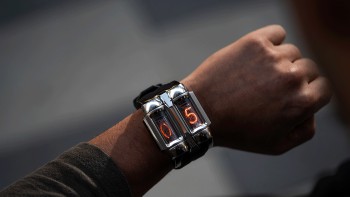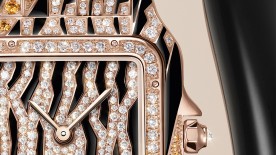Sitting in a room of independent watchmakers at the slightly stuffy Hotel Angleterre during Geneva Watch Days, Ilya Gelfman looks like he is there to shake things up. Dressed in a designer t-shirt and trainers, he could be an artist, a musician, a filmmaker -- anything but a watchmaker. However, this young man is starting to blaze a trail in the watchmaking industry, having already received a Grand Prix d’Horlogerie de Genève (GPHG) nomination for the “Petite Aiguille” award in 2022.
Gelfman is in town to present his eponymous watch brand and its introductory model, the IN-16 Nixie, limited to 999 pieces. Composed of two Nixie tubes, the time is displayed inside a grid of wire mesh with shaped electrodes that display the time, date, and battery life in a vibrant orange light. Cloaked in a hand-polished stainless steel case with curved anti-reflective sapphire crystals, the IN-16 Nixie is a watch that immediately catches the eye.
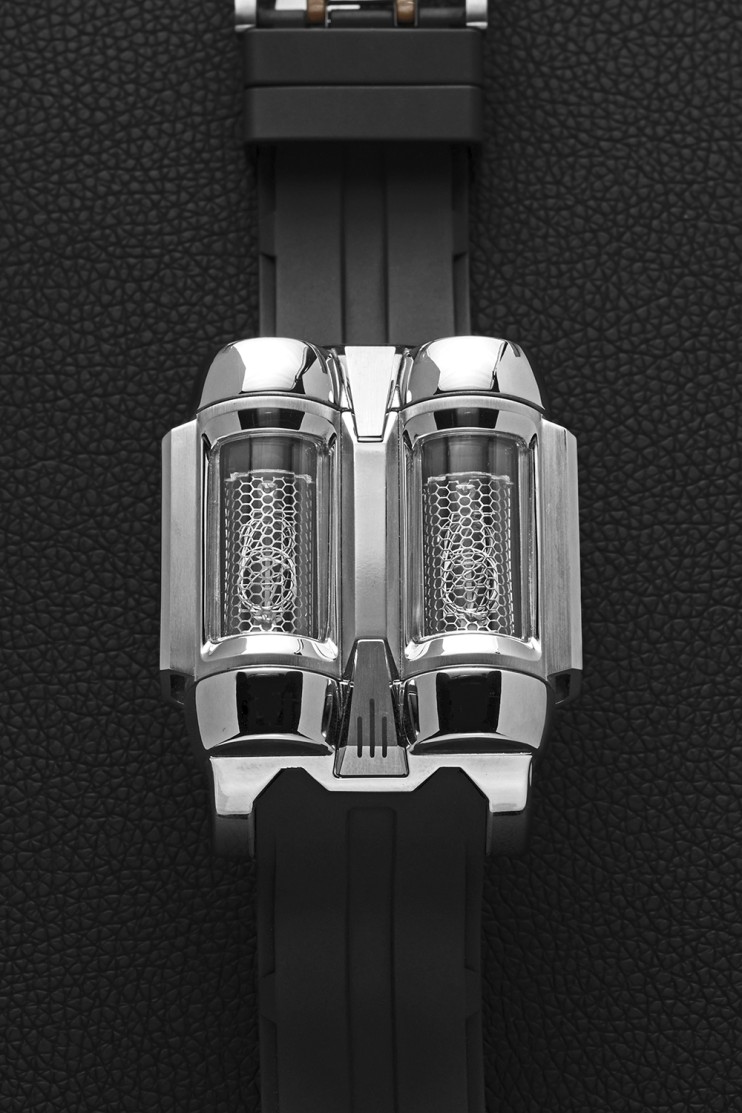
What is a Nixie Tube?
The Nixie Tube was invented in the 1930s, although there is conflicting information about who should be credited with the idea. One thing that enthusiasts do agree on, however, is that the name comes from Burroughs Corp, a business equipment maker who commercialized the invention and called it “Numeric Indicator X (or ten)”.
Nixie tubes went on to be widely used in electronic equipment such as calculators and early digital clocks, but also marked history by indicating everything from data for NASA’s moon landing to the rise and fall of the Wall Street Stock Exchange. The unique orange glow of their display was ubiquitous in the 1950s but their popularity started to wane in the 1970s with the arrival of new display technologies such as LED and LCD. Luckily, thanks to enthusiasts like Gelfman, they are now being appreciated by a new generation of retro-technology lovers.
Power pack
Gelfman has acquired over 100,000 tubes of old stock Nixie tubes from his native Russia, but also from Japan, the UK, and the USA, ensuring his movement supply for some years to come -- a smart move when the mechanical watch industry is struggling to keep up with demand. And even though this technology is over 70 years old, it can be powered by an integrated rechargeable lithium-ion battery that gives five days of autonomy on a single charge, which is much better than the majority of smartwatches. It can also be connected to a computer app for easy setting.
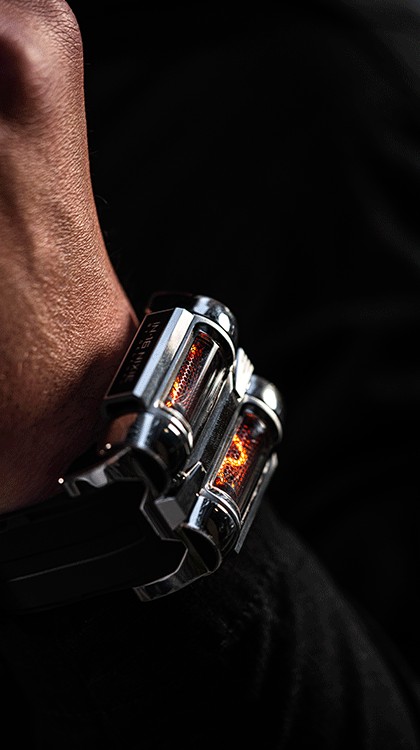
How does it work?
There are two ways to activate it. The first is by flicking the wrist which illuminates the tubes thanks to an integrated gyroscope. The sensitivity of the “flicking” can also be set through the app to match its owner’s wrist strength. The second way to read the time is via a button on the front of the watch. One push and the time flashes onto the dial, with the hours first, minutes next and then the seconds. Two pushes show the date – day followed by the month – and three pushes indicate the remaining battery level as a percentage.
Distributing the IN-16 Nixie
Not only is Gelfman doing his own thing in terms of production, but he is also distributing his watch solely on Instagram and his website. He also has another unusual concept in his business plan where he raises the price of the watch by three Euros per day. The watch started at €5,000 and is now (at the time of publishing) €6,999. Madness or genius? The waitlist would indicate the latter.
Despite the gradually increasing price, it is still relatively affordable (in comparison to other unusual high-end mechanical watches) for a watch that offers something completely out of the ordinary…but if you like it, don’t wait too long, the clock is ticking (or flashing in this case)!
